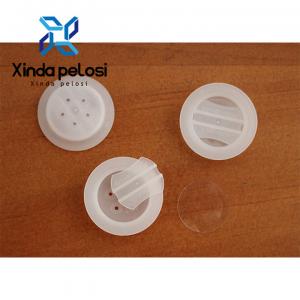
Add to Cart
| Material | Multi-layered materials such as PET/AL/PE, PET/VMPET/PE, or kraft paper laminates |
| Valve Material | Typically made of food-grade polyethylene or polypropylene |
| Valve Type | One-way degassing valve or pressure relief valve |
| Valve Diameter | Common sizes range from 1/4 inch to 1/2 inch |
| Bag Size | Various sizes available, including standard capacities like 250g, 500g, 1kg, and custom sizes |
| Bag Style | Stand-up pouch, flat bottom bag, gusseted bag, side gusset bag, quad seal bag, or custom styles |
| Closure | Resealable zipper closure, heat seal, tear notch, or tin-tie closure |
| Barrier Properties | High barrier to oxygen, moisture, light, and odor transmission |
| Printing | Customizable printing options for branding, logos, product information, and artwork |
| Shelf Life | Extended shelf life for preserving coffee freshness and flavor |
| Recyclability | Most coffee bags are not easily recyclable due to the multi-layered construction |
| Application | Suitable for packaging whole bean or ground coffee, as well as other specialty food products |
| Customization | Options for custom bag sizes, shapes, colors, and finishes to meet specific branding and packaging needs |
Preservation of Freshness: The one-way valve on these coffee bags allows gases, such as carbon dioxide, to escape from the bag without allowing air to enter. This helps to preserve the freshness and flavor of the coffee beans by preventing oxidation and staleness.
Extended Shelf Life: By releasing excess gases produced during the roasting process, one-way valve coffee bags help to extend the shelf life of the coffee beans. This ensures that consumers can enjoy a flavorful and aromatic coffee experience long after the beans have been roasted.
Protection from External Factors: One-way valve coffee bags are made from multi-layered materials that provide a high barrier to oxygen, moisture, light, and odor transmission. This protects the coffee beans from external factors that can compromise their quality, such as exposure to air, moisture, or sunlight.
Convenient Packaging: These bags come in various sizes and styles, including stand-up pouches, flat bottom bags, gusseted bags, and quad seal bags. They may feature resealable zipper closures, tear notches, or tin-tie closures for convenient opening and closing.
Customizable Design: One-way valve coffee bags can be customized with branding, logos, product information, and artwork to enhance product visibility and appeal. This allows coffee roasters and retailers to create unique packaging that reflects their brand identity and attracts consumers.
Versatile Application: While primarily designed for packaging coffee beans, one-way valve coffee bags can also be used for packaging ground coffee, tea, nuts, grains, and other specialty food products that emit gases during storage. This versatility makes them a valuable packaging solution for a variety of products.
Environmentally Friendly Options: Some manufacturers offer environmentally friendly options for one-way valve coffee bags, such as compostable or recyclable materials. This allows consumers to choose packaging that aligns with their sustainability values.
Q: Are you trading company or manufacturer ?
A: We are factory.
Q:How to Distinguish the Quality of One Way Degassing Valve?
A:1.The easy way to test it is by pumping the air from the bags with one way degassing valve after sealing, and then see if the bag will expand or not.
2.Test the freshness of coffee
Making a cup at different times, one month, two months, or even three months longer time using the valve, write down the test result and make the comparison, Compare the foam volume and the acidity of the coffee, if there still is a lot of foam and the coffee taste less sour, it is said that the coffee is kept well. Otherwise,,the one way degassing valve is not good and can't keep the freshness of coffee effectively.
3. Check the fermented feed
The one way degassing valve placed in the packaging bag aims to help vent the air that is produced by the feed to keep the high quality of fermented feed for a longer time. If there is gas trapped in the packaging bag, or the fermented feed is moldy, it's no doubt that the one way degassing valve is inferior.
